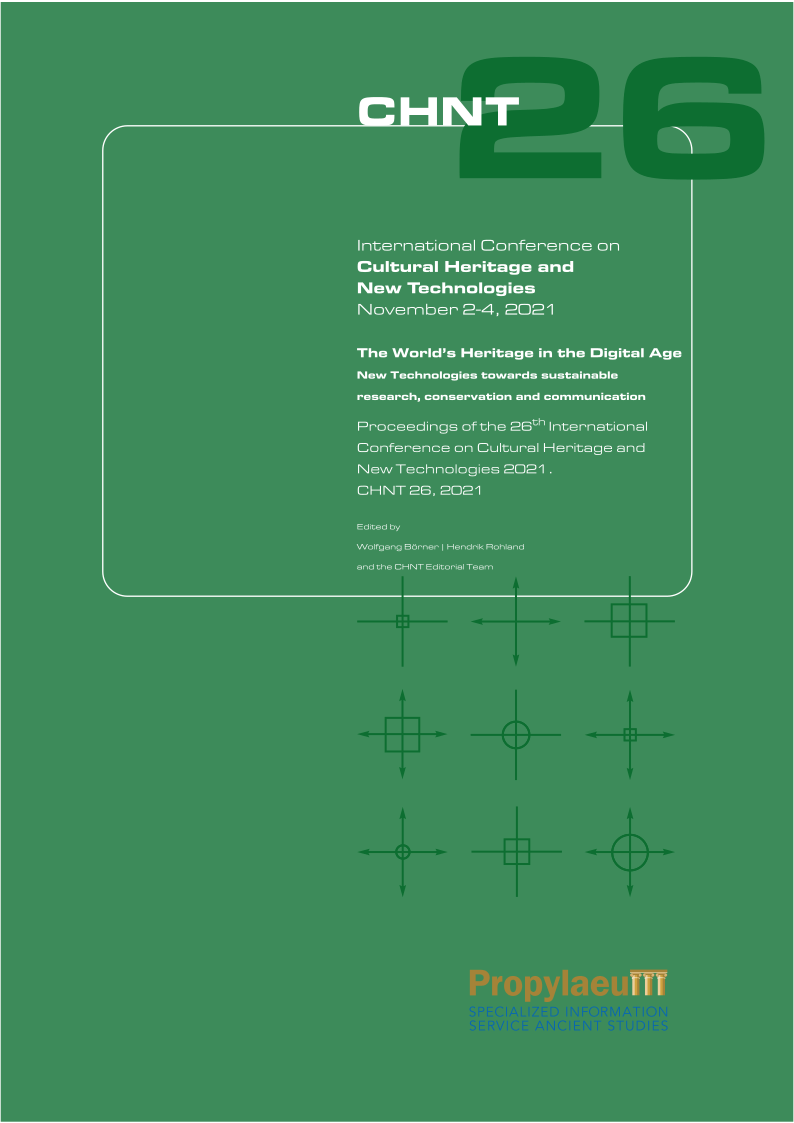Photogrammetric 3D digitisation of models from an architectural collection
Keywords:
digitisation, architectural models, photogrammetry, research data management, specialised information serviceAbstract
The specialised information service FID BAUdigital develops a 3D scanning and data publishing service for architectural models. Starting with an automatic acquisition procedure featuring photogrammetric methods implemented in the CultArm3D it goes on to postprocessing and data enrichment and further to a repository infrastructure providing access guided by FAIR data principles. Such an undertaking demands a metadata model informed by the digitized objects and utilisation of the resulting digital assets in architectural research. Therefore, this contribution identifies at least four relevant perspectives on digital architectural models: 1. As digital objects as result of a scanning procedure. 2. As representation of artifacts emerging from a certain cultural context. 3. As items within a collection. 4. As representations of build or unbuild architecture. These perspectives have to be taken into account in metadata models and as starting points for open linked data. Examples are given reflecting these perspectives as well as use-cases for digitised models. These digital versions provide more access to architectural models and more interoperability for semantic web applications. But they are not exclusively seen as medium for scholarly or museal use but as research data allowing new digital methods. The FID BAUdigital aims to further develop this service alongside with suitable metadata models driven by the demands of the research community.
References
Arndt, S., Beer, A., Blümel, I., Elsner, C., Hauschke, C., Holste, D., Kampe, B., Lindlar, M., Mofakhamsanie, G., Noback, A., Saemann, H., Tittel, S., Voormann, F., Wermbter, K., and Winkler, R. (2022). 'FID Civil Engineering, Architecture and Urbanism digital - A platform for science (BAUdigital)', Research Ideas and Outcomes, 8, pp. e82563, DOI:10.3897/rio.8.e82563.
Elser, O. and Cachola Schmal, P. (eds.) (2012). Das Architekturmodell: Werkzeug, Fetisch, kleine Utopie. Zürich: Scheidegger & Spiess.
Noback, A. and Grobe, L.O. (2022) “Preparing the past for the future: Curating a daylight simulation model of Hagia Sophia for modern data infrastructures”, in Börner, W. et al. (eds.) Artificial Intelligence: New Pathways Towards Cul-tural Heritage. Heidelberg: Propylaeum (Proceedings of the International Conference on Cultural Heritage and New Technologies, Vienna, 25), pp. 23–31. DOI:10.11588/propylaeum.1045.c14476.
Tausch, R., Domajnko, M., Ritz, M., Knuth, M., Santos, Pedro and Fellner, D. (2020). Automated 3D Mass Digitization for the GLAM Sector. Archiving 2020 Final Program and Proceedings (p. pp. 55-59(5)). So-ciety for Imaging Science and Technology.
Wilkinson, Mark D. et al. (2016). ‘The FAIR Guiding Principles for scientific data management and stewardship’. Scien-tific data, 3, pp. 160018–160018, DOI:10.1038/sdata.2016.18
Downloads
Published
Conference Proceedings Volume
Section
License
Copyright (c) 2025 Andreas Noback, Chris Dähne, Roger Winkler, Stephan Tittel, Annika Beissner, Katja Leiskau, Hasan Kutlu, Reimar Tausch, Martin Schurig, Matevz Domajnko, Pedro Santos

This work is licensed under a Creative Commons Attribution-ShareAlike 4.0 International License.
The CHNT older Proceedings are licensed under the creative commons license CC BY-NC-ND 3.0.
From the issue 26 on, they will be licensed under the creative commons license CC-BY-SA 4.0


